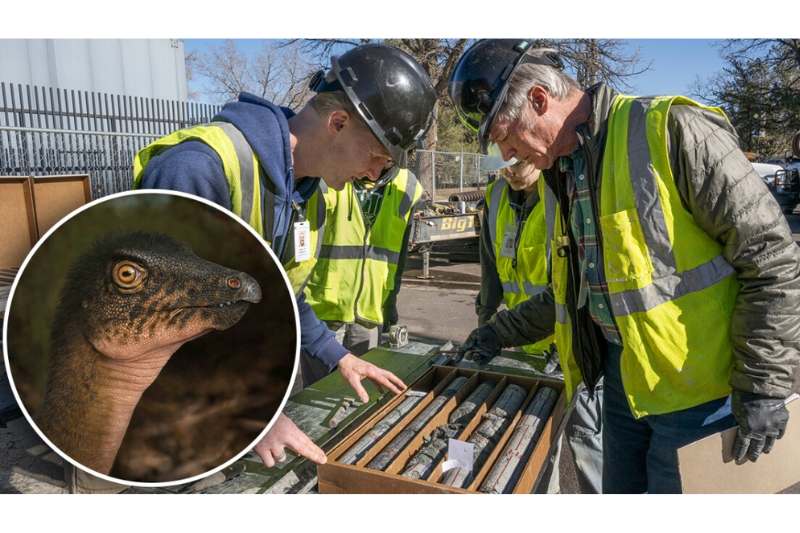
DENVER, CO | July 2025 — In a groundbreaking scientific development, researchers at the Denver Museum of Nature & Science have unearthed a 70-million-year-old dinosaur fossil beneath the museum’s own parking lot. The rare discovery, made during a geothermal drilling project, is being hailed as one of the oldest and deepest fossil finds in the Denver Basin.
While conducting core sampling as part of a geothermal energy transition, scientists struck an unexpected layer of prehistoric history. At a depth of 763 feet, a partial vertebra from a herbivorous dinosaur was retrieved — likely belonging to a Thescelosaurus or Edmontosaurus, both species that roamed North America during the Late Cretaceous period.
According to Dr. James Hagadorn, curator of Earth Sciences at the museum, “Finding a fossil this old, this deep, and in this location is like winning the scientific lottery. It opens a whole new chapter in understanding Denver’s prehistoric past.”
The fossil was discovered as part of a $250,000 geothermal energy initiative aimed at reducing the museum’s dependence on natural gas. The project involved drilling nearly 1,000 feet into the ground — not just to install a new energy system, but also to collect geological cores for research.
“We knew we’d learn more about the Earth’s layers, but we didn’t expect to dig up ancient life,” said Bob Raynolds, a research associate at the museum.
This vertebra is now officially the deepest and oldest dinosaur fossil discovered within city limits. The sediment surrounding the fossil suggests it dates back to 67–70 million years ago, just before the asteroid event that wiped out the dinosaurs.
The discovery offers rare insights into the ancient ecosystems that once existed where Denver now stands — a region once filled with lush vegetation and giant reptiles.
The fossil is currently on display at the museum’s “Discovering Teen Rex” exhibit, where visitors can view it alongside other significant dinosaur finds, including the popular Teen Rex specimen.
“It’s poetic,” noted museum spokesperson Kari Allen. “The public can now stand just above the very spot where this dinosaur lay buried for millions of years.”
The museum’s researchers plan to continue analyzing the sediment and fossil in greater detail. Their findings have already been published in Rocky Mountain Geology and have attracted interest from paleontologists across the country.
“This discovery proves that even beneath our feet in a bustling city, the Earth holds secrets we’re only beginning to uncover,” said Dr. Hagadorn.
The Denver Museum of Nature & Science is a leading scientific institution dedicated to inspiring curiosity through exploration of natural history. The museum conducts active research, hosts educational exhibits, and now plays a key role in both clean energy innovation and paleontological discovery.